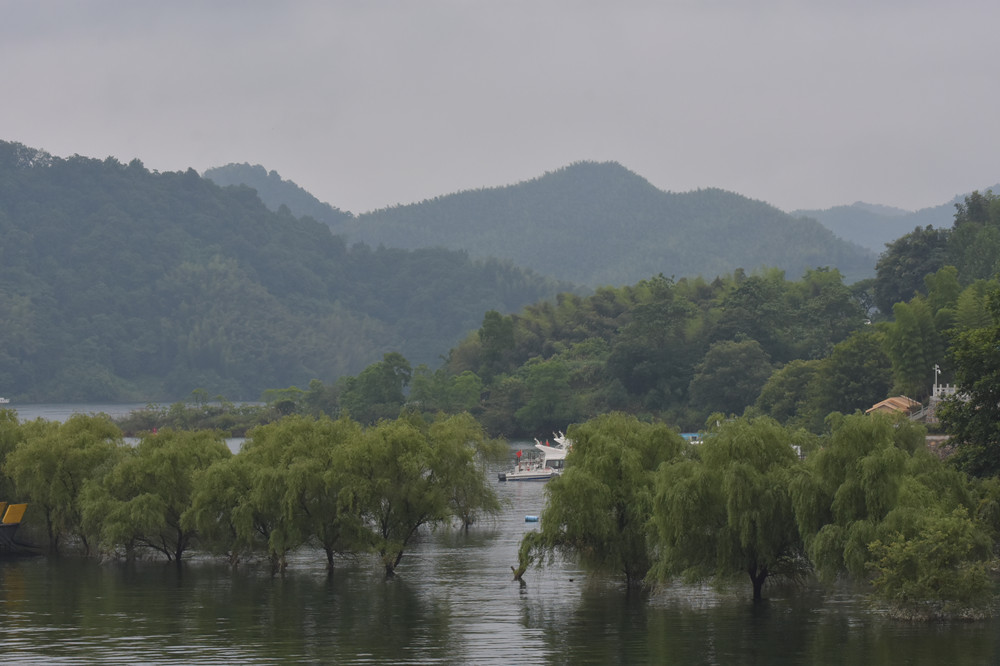中国科学院大气物理研究所大气科学和地球流体力学数值模拟国家重点实验室
State Key Laboratory of Numerical Modeling for Atmospheric Sciences and
Geophysical Fluid Dynamics (LASG)
Institute of Atmospheric Physics, Chinese Academy of Sciences
State Key Laboratory of Numerical Modeling for Atmospheric Sciences and
Geophysical Fluid Dynamics (LASG)
Institute of Atmospheric Physics, Chinese Academy of Sciences

Vol.18/No.18 December 2022
Global Warming Increases Risks of East China Flooding
In the summer of 2020, an anomalously strong WPSH led to catastrophic floods with hundreds of deaths, 28,000 homes destroyed and tens of billions of dollars in economic damage in China alone.
Scientists from the Institute of Atmospheric Physics (IAP) of the Chinese Academy of Sciences and the Commonwealth Scientific and Industrial Research Organization (CSIRO), recently found that the frequency of such strong WPSH events as seen in the summer of 2020 is likely to increase under the business-as-usual carbon emissions scenario, based on 32 climate models.
Their study was published in The Proceedings of the National Academy of Sciences (PNAS) on May 30.

East China flooding in the summer of 2020 (Image by FU Yunfei)
The interannual intensity of the WPSH is influenced by the variability of sea surface temperature (SST) in tropical regions such as the central Pacific and Indian Ocean. The anomalous SST can affect both local and remote rainfall and atmospheric convection, which in turn modulate atmospheric circulation over the northwestern Pacific.
Under global warming, rainfall and atmospheric convection can be more sensitive to SST variability. This is because saturation vapor pressure increases exponentially with increases in temperature. In a warmer climate, the mean-state moisture content of the atmosphere will increase and the response of tropical humidity and associated gross moist instability to SST anomalies will also be larger.
"These changes combining with the non-uniform change in background SST can lead to enhanced responses of atmospheric convection to the central Pacific SST, and then increased variability of atmospheric circulation, including the WPSH," said Dr. YANG Kai from IAP, lead author of the study.
"The increase in WPSH variability translates into an increase in frequency of strong WPSH events, which suggests that greenhouse warming is likely to increase the risk of East China flooding associated with strong WPSH events as seen in the 2020 episode," said Prof. HUANG Gang from IAP, one of the corresponding authors.
Citation: Yang, K., W. Cai*, G. Huang*, K. Hu, B. Ng and G. Wang,2022: Increased variability of western Pacific subtropical high under greenhouse warming, Vol.119, No.23, e2120335119, Proceedings of the National Academy of Sciences (PNAS), https://doi.org/10.1073/pnas.2120335119
Link: https://www.pnas.org/doi/10.1073/pnas.2120335119
Contact: CAI Wenju, wenju.cai@csiro.au,HUANG Gang, hg@mail.iap.ac.cn
Add: No.40, Huayanli, Beichen West Road, Chaoyang District, Beijing P.O. Box 9804, 100029, China
E-mail: lasg_newsletter@lasg.iap.ac.cn
Editors: Chuanyi Wang (wangcy@lasg.iap.ac.cn), Kangjun Chen(ckj@lasg.iap.ac.cn)
E-mail: lasg_newsletter@lasg.iap.ac.cn
Editors: Chuanyi Wang (wangcy@lasg.iap.ac.cn), Kangjun Chen(ckj@lasg.iap.ac.cn)